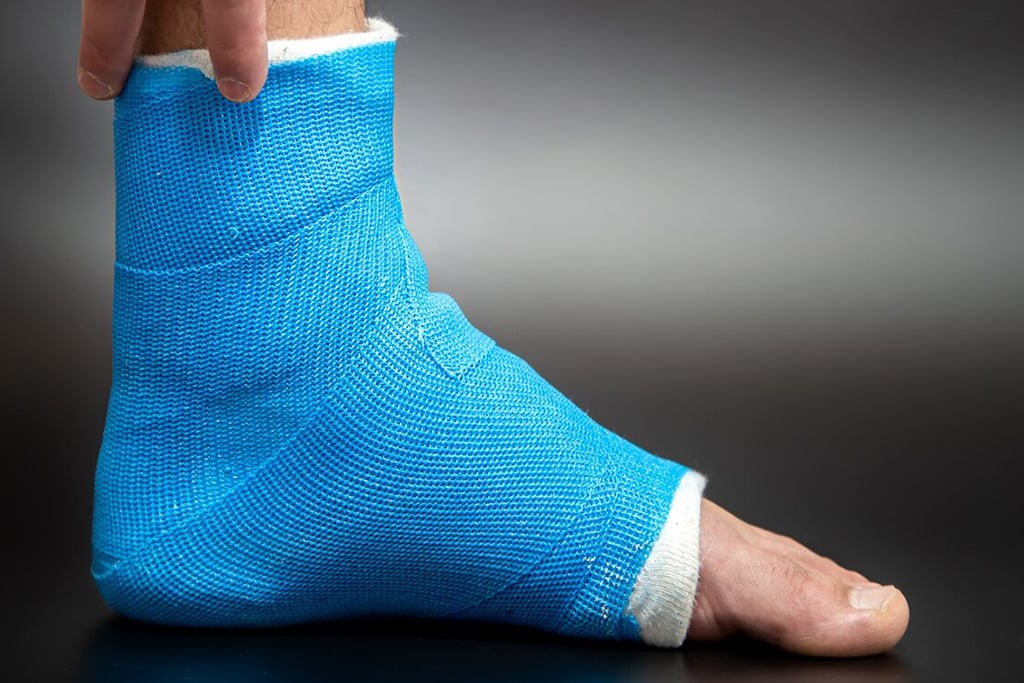An ankle fracture can significantly impact your mobility and daily routine, making recovery a fundamental part of the healing process. Understanding what to expect during this period can help you prepare mentally and physically for a smooth rehabilitation. Here’s what you can expect after an ankle fracture:
Starting With Treatment and Immobilization
The first step in treating an ankle fracture involves stabilizing the broken bone. Your podiatrist will likely place your ankle in a cast, boot, or splint to keep the bones in the right position while they heal. During this time, you’ll need to keep weight off your injured ankle. Your doctor may give you crutches or a knee scooter to help you move around safely.
The bone starts healing immediately, but it takes several weeks for new bone tissue to form and become strong. You’ll have regular follow-up appointments during this phase. Your doctor will take X-rays to make sure the bones are healing properly and are in the correct position.
Controlling Pain and Promoting Healing
Pain is normal after an ankle injury, especially in the first few weeks. Your doctor may prescribe pain medication to help alleviate your discomfort. Elevating your ankle above heart level when sitting or lying down helps decrease swelling. Swelling can slow down the healing process, so managing it is fundamental for your recovery. You may feel tired as your body uses energy to heal. Getting enough sleep and eating healthy foods gives your body the tools it needs to recover properly.
Rebuilding Strength Through Therapy
Once your doctor clears you to start moving your ankle again, physical therapy becomes a key part of recovery. A physical therapist will instruct you in exercises to help restore strength, flexibility, and balance to your ankle. Early exercises focus on gentle movement to prevent stiffness. As your ankle gets stronger, you’ll progress to more challenging activities. These may include walking on different surfaces, balance exercises, and strength training.
Physical therapy usually lasts several weeks to months. The length depends on how severe your ankle fracture was and how well you respond to treatment. Staying consistent with your exercises helps speed up recovery and prevents future injuries.
Resuming Movement While Preventing Reinjury
Getting back to your regular activities happens gradually. Your doctor and physical therapist will guide you on when it’s safe to drive, work, and participate in sports or other activities you enjoy. You may need to wear supportive shoes or ankle braces when you first resume activities. The extra support protects your healing ankle and gives you confidence as you get back to your normal routine. Preventing future ankle injuries involves maintaining good strength and balance in your ankle. Continue doing the exercises your physical therapist taught you, even after you finish formal therapy.
Book Your Ankle Fracture Evaluation
People return to their normal activities after an ankle fracture with proper treatment and rehabilitation. Each phase of recovery serves a key purpose in helping your ankle heal completely and function well again. For ankle trauma or signs that you have a broken ankle, contact a trusted foot specialist or podiatrist near you today to schedule your ankle fracture evaluation and start your journey back to healthy, pain-free movement.
- Aurö: A Comprehensive Guide to Mindful Design in AI, Branding, and Wellness Tech
- How a Certified Midwife Can Support Your Birth Experience
- Jadeitový Kameň: The Alluring Beauty and Power of Jadeite
- Plangud: A Comprehensive Overview for Construction and Carpentry Enthusiasts
- Nurture Tech Tips EmbedTree: Unlocking Growth and Advancing Skills in the Digital Age





